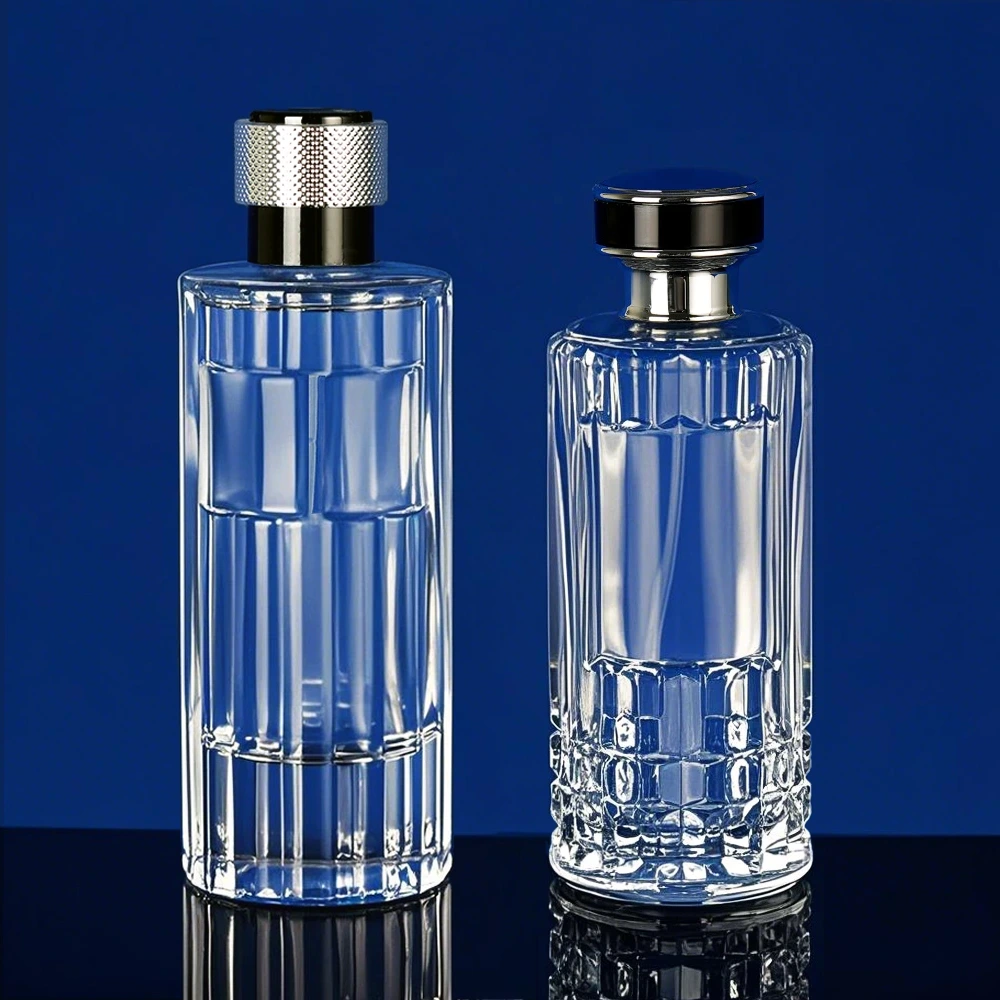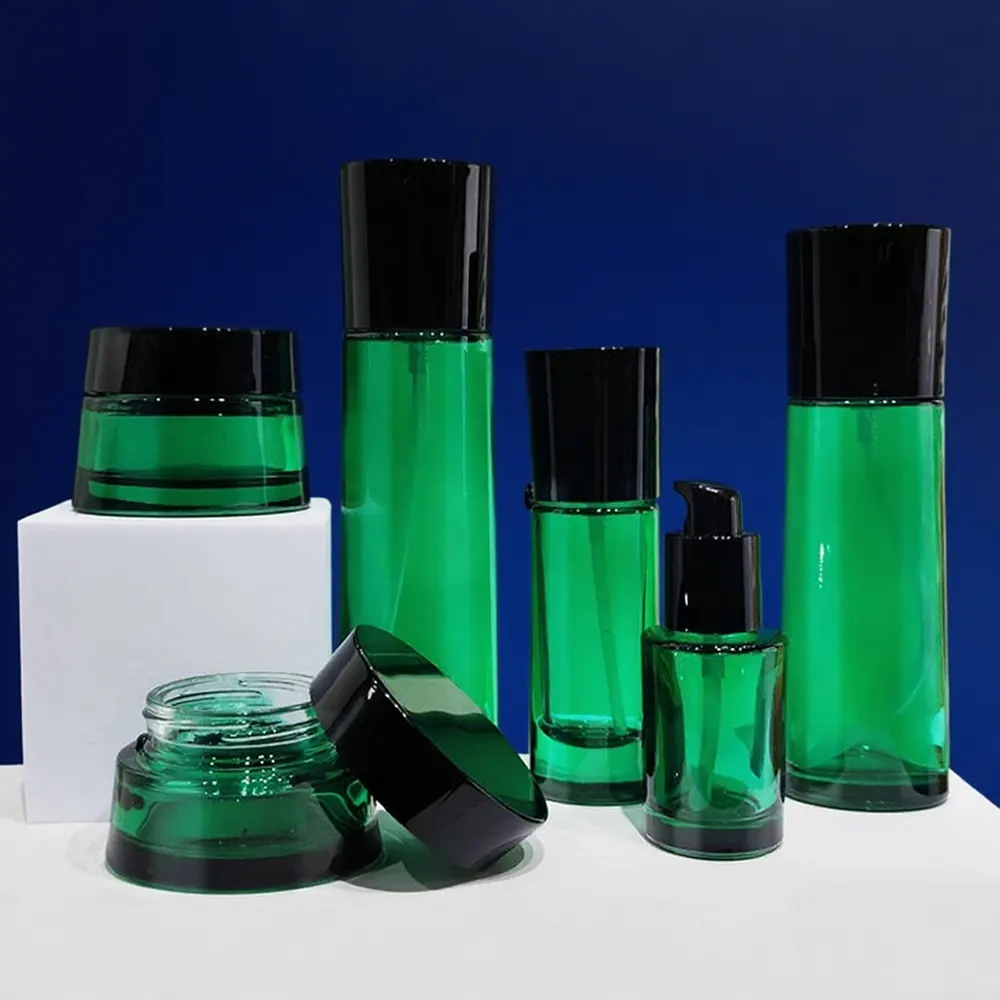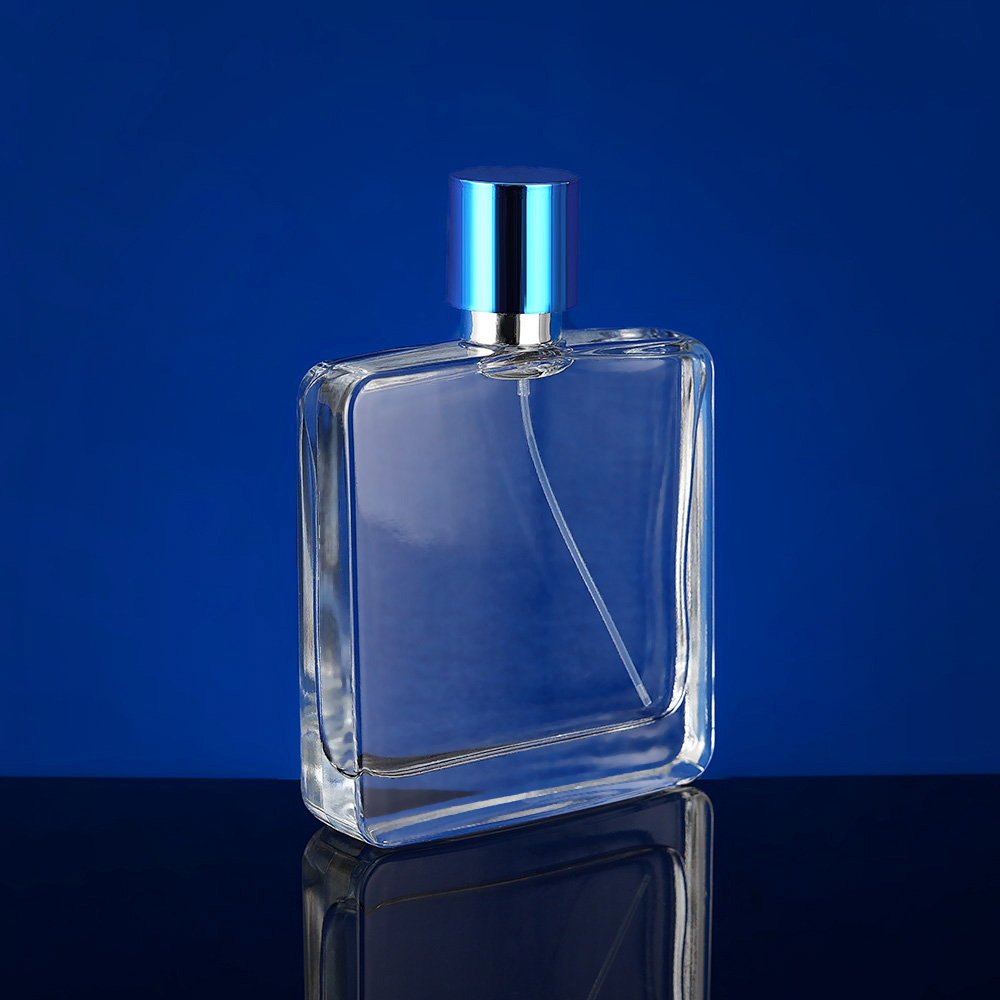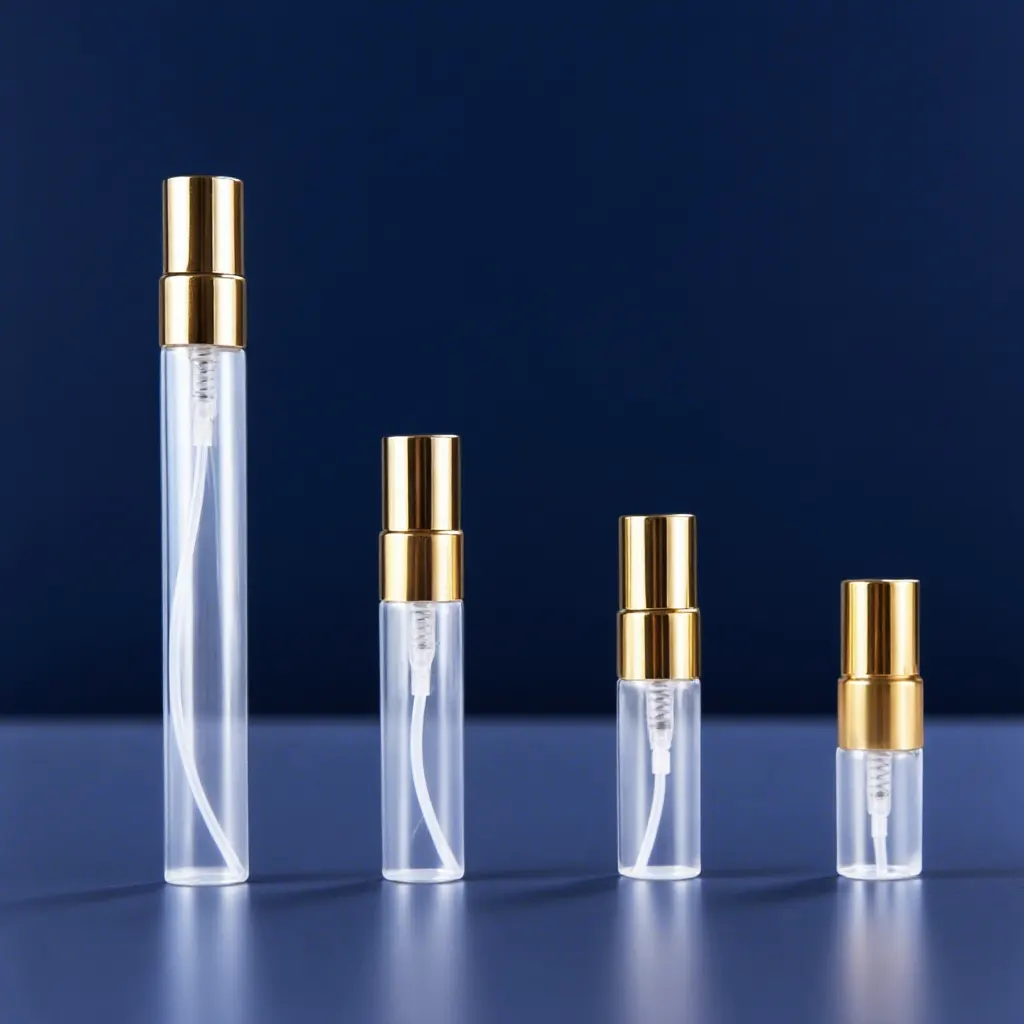
Le rôle indispensable des entreprises d'emballage cosmétique dans le succès des flacons d'huiles essentielles en verre
Table des matières
1. Introduction : L'impératif stratégique des entreprises d'emballage lors du lancement de flacons en verre pour huiles essentielles
Sur le marché en pleine expansion des huiles essentielles, les entreprises d'emballage cosmétique sont des partenaires stratégiques, indispensables au succès du lancement de produits, notamment pour les flacons d'huiles essentielles en verre. Ce rapport souligne leur contribution polyvalente, en abordant les défis et les opportunités spécifiques à chaque marché. Avec une croissance mondiale estimée à 27-59 milliards de dollars US d'ici 2030-2034, le marché mondial des huiles essentielles connaît une croissance significative. L'emballage devient ainsi un outil essentiel de croissance, de différenciation et de succès commercial, servant de support à la première impression et à l'histoire de la marque. Pour des marques telles que… VesseluxeDans les marchés concurrentiels, un emballage haut de gamme est primordial.
2. Concept et design : Traduire la vision de la marque en flacons d’huiles essentielles en verre fonctionnels
Le développement du produit commence par une conception et un design collaboratifs, traduisant l'identité de la marque en un objet fonctionnel et esthétiquement plaisant. flacons d'huiles essentielles en verre.
2.1. Sélection des matériaux pour l'efficacité du produit et le positionnement de la marque
Le verre est nécessaire pour les huiles essentielles en raison de leur inertie chimique, empêchant les réactions de lixiviation et préservant la pureté, la concentration et la durée de conservation.
- Verre ambré : Conforme aux normes industrielles, bloquant plus de 97 % des rayons UV, idéal pour les huiles sensibles à la lumière.
- Verre bleu cobalt et vert : Offre une protection UV modérée et un attrait esthétique.
- Verre violet (verre Miron) : Meilleure protection grâce au blocage de toute la lumière visible sauf le violet, idéal pour les huiles extrêmement sensibles, produits ultra-premium mais à prix élevé.
- Verre borosilicaté : 13 à 15 % d'oxyde de bore, offrant une meilleure résistance à la chaleur, aux produits chimiques et aux chocs thermiques, ce qui est idéal pour les applications exigeantes.
- Verre sodocalcique : plus bon marché et en verre mangue (90% verre commercial), mais moins durable.
2.2. Conception ergonomique et mécanismes de distribution
Sa conception ergonomique, qui facilite la prise en main et le versement, améliore le confort d'utilisation.
- Inserts pour compte-gouttes : Important pour une distribution précise ; tout désordre peut entraîner une propagation et une contamination.
- Cou spécifique : Des conceptions telles que les bouteilles 18DIN garantissent un ajustement précis du bouchon, une distribution cohérente et l'absence de fuites.
- Contenance de la bouteille : La petite taille (5 ml à 30 ml) est préférée pour la portabilité et pour réduire l'oxydation, souvent avec un embout à bille ou à compte-gouttes européen.
2.3. Intégrité du système de fermeture et preuve de falsification
Les bouchons sont importants pour préserver les huiles et éviter les fuites, car les fissures accélèrent l'oxydation.
- Groupe trafiqué-trafiqué : requis pour la sécurité des produits, la protection des consommateurs et la préservation de la réputation de la marque.
- Processus de remplissage : Lors du remplissage, un bouchon mal ajusté ou un problème (par exemple, de l'huile, un couple de serrage incorrect sur les filetages) peut accentuer les fuites, les dysfonctionnements et les pertes de puissance, soulignant l'importance d'une conception et d'une fabrication robustes.
2.4. Identité de marque et perception du consommateur
L'emballage joue le rôle d'ambassadeur de la marque, influe considérablement sur la perception du consommateur et ses décisions d'achat ; 66 % des consommateurs essaient de nouveaux produits uniquement en fonction de leur emballage.
- Attrait visuel : Il convient de porter une attention particulière à la qualité des matériaux, aux finitions et à la valeur ajoutée du produit.
- Alignement de la marque : L'adéquation du packaging à l'image de marque renforce l'authenticité, tandis que la couleur, l'originalité et la typographie suscitent des émotions. Un emballage écologique est gage de stabilité.
- Esthétique culturelle : Le design doit être compatible avec les préférences régionales ; les marchés du Moyen-Orient privilégient les projets ambitieux, les marchés européens préfèrent la simplicité et le respect de l’environnement, et le design asiatique met l’accent sur l’harmonie.
2.5. Outils de collaboration et de visualisation avancée
Pour une coopération efficace, il est nécessaire de comprendre l'identité de la marque et les publics cibles.
- Prototype rapide : Le rendu 3D et les vecteurs liés à l'IA sont essentiels. Des entreprises comme Jarsking utilisent le dessin 3D pour le prototypage rapide et la récurrence des conceptions, développant des modèles en quelques heures et des prototypes en quelques jours.
- Surmonter les défis : Ces dispositifs contribuent à assurer la stabilité de base des formes organiques grâce à une distribution précise des matériaux et à des modifications du moule.
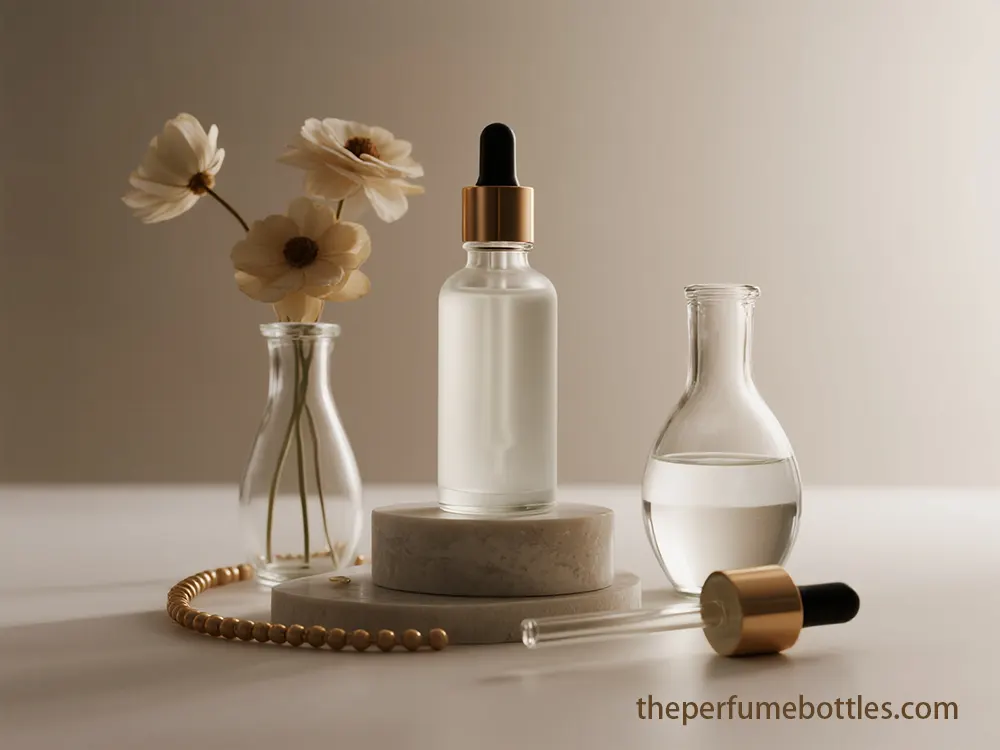
Obtenez des échantillons gratuits
3. Développement technique et prototypage pour les emballages en verre d'huiles essentielles
Les produits d'ingénierie et de vérification garantissent l'intégrité, la sécurité et la durée de conservation.
3.1. Compatibilité chimique et protection UV
Le verre est privilégié pour son inertie chimique, empêchant toute interaction avec les composés volatils qui dégradent le plastique et le caoutchouc. Les bouteilles en plastique peuvent altérer les substances chimiques, modifier la qualité des huiles et accroître les risques. De nombreuses huiles essentielles sont sensibles à la lumière ; un verre foncé (ambre, bleu cobalt, vert) bloque les rayons UV nocifs, prolonge la durée de conservation et préserve les propriétés thérapeutiques.
3.2. Essais d'intégrité structurelle
Des tests rigoureux garantissent la souplesse physique.
- Résistance aux chocs thermiques : Évalue la façon dont les bouteilles supportent les fluctuations rapides de température (par exemple, de 60 à 90 °C à 0 à 20 °C) sans se désintégrer, ce qui est important pour le transport et le stockage. 64, ASTM C149 teste en particulier les contenants en verre commerciaux pour les chocs thermiques.
- Résistance aux chutes et à la pression : Les bouteilles assurent les effets physiques et la pression interne.
3.3. Outils de conception et de simulation avancés
- Prototype rapide : L'impression 3D (SLA, FFF) accélère le développement de la conception, permettant une évaluation physique de l'esthétique et de la structure avant la production, l'adaptation du budget et le lancement.
- Analyse par éléments finis (FEA) : L'analyse des contraintes dans la conception du verre dues aux charges stables et transitoires (pression interne, choc thermique) permet d'identifier les zones problématiques et d'adapter les conceptions en termes de lumière ou de performance avant la fabrication.
3.4. Processus de validation des nouveaux systèmes de fermeture
Le système de fermeture est essentiel pour garantir une étanchéité parfaite et protéger contre les risques de contamination par l'air. Des composants mal ajustés ou un remplissage inadéquat peuvent entraîner des fuites et des dysfonctionnements. Le bouchon et le col de 18 DIN sont les normes industrielles pour les flacons compte-gouttes destinés aux huiles essentielles.
3.5. Normes industrielles et caractérisation chimique
- Normes ISO et ASTM : Des méthodes d'essai et d'étalonnage des matériaux en verre sont établies afin de garantir leur qualité et le respect des tolérances. La norme ASTM est courante aux États-Unis (FDA-Panchayat pour les produits pharmaceutiques), tandis que la norme ISO prévaut en Europe et en Asie.
- Caractéristiques chimiques des huiles essentielles : La chromatographie en phase gazeuse couplée à la spectrométrie de masse (GC-MS) identifie les composants, mesure les concentrations, confirme l'authenticité et détecte la falsification, garantissant ainsi les avantages médicaux et la conformité réglementaire.
3.6. Validation complète de l'emballage
La vérification des emballages exige un plan complet, incluant les critères d'acceptation, une taille d'échantillon suffisante et la situation la plus défavorable. Les stratégies doivent être conformes aux normes telles que les normes ISO 11607-1 et -2, notamment pour la conception des barrières stériles. Les études d'absorption et les tests d'extractibles/de flavonoïdes sont également importants pour les systèmes de fermeture des contenants.
4. Fabrication et assurance qualité des flacons en verre pour huiles essentielles
Verre de haute qualité essential oil bottles repose sur une fabrication de pointe, une décoration précise et un contrôle qualité rigoureux.
4.1. Techniques de moulage de précision
Les bouteilles sont produites à l'aide de technologies de formage avancées telles que le soufflage, le soufflage par pression et le soufflage par pression à col étroit (NNPB), permettant une distribution précise du verre et des contenants plus légers et plus résistants.
4.2. Processus de recuit critique
Après leur fabrication, les bouteilles passent dans le tunnel des fours de soufflage (bhattas) afin d'éliminer les contraintes internes par refroidissement rapide, ce qui accroît considérablement leur résistance et leur durabilité. Pour le verre sodocalcique, les bouteilles sont chauffées à 510–550 °C puis refroidies progressivement, un processus qui dure de 20 minutes à 2 heures. Un recuit approprié peut augmenter la résistance aux chocs de 300 % et supporter des variations de température de 50 à 70 °C.
4.3. Diverses méthodes de décoration
L'adaptation met en valeur la beauté grâce à son attrait et à son image de marque :
- Sérigraphie, marquage à chaud, gravure laser, application délicate, peinture au pistolet, dépolissage, galvanoplastie, tampographie, métallisation, transfert à chaud et makkashi.
4.4. Protocole de contrôle qualité en plusieurs étapes
Des protocoles de contrôle qualité stricts et en plusieurs étapes sont appliqués :
- Inspection des matières premières : vérifie la pureté, la composition et l'humidité.
- Surveillance en cours de processus : température, symétrie et surveillance continue des moisissures.
- Inspection après production : Inspection manuelle et automatique à 100 % pour la précision dimensionnelle, les défauts visuels (bulles, fissures, rayures) et les tests fonctionnels (effet, pression, choc thermique, étanchéité, résistance chimique).
4.5. Systèmes d'inspection automatisés avancés
Les systèmes automatiques sont indispensables pour détecter les défauts avec précision et à grande vitesse. Ils utilisent des caméras haute résolution, des capteurs spéciaux, un éclairage LED et des algorithmes d'IA/apprentissage automatique, permettant d'identifier des défauts infimes (micro-croix, bulles, déformations, fils qui dépassent) avec une précision allant jusqu'à 0,1 mm.
4.6. Maîtrise statistique des processus (MSP) pour l'amélioration continue
Le SPC (Système de Contrôle Précis) surveille et contrôle les processus de construction à l'aide de données en temps réel afin de garantir l'efficacité et une qualité constante. Il utilise la carte de contrôle pour identifier les variations générales dues à des causes identifiables, détecter les problèmes initiaux, réduire les gaspillages et améliorer la capacité du processus.
4.7. Impact des tolérances de fabrication sur les opérations en aval
La précision dimensionnelle influe sur l'efficacité de la ligne de remplissage et l'expérience client. Un écart sélectif affecte la compatibilité du distributeur, pouvant entraîner des fuites ou une étanchéité inadéquate.
4.8. Initiatives en matière d'efficacité énergétique
Les fabricants réduisent leur consommation d'énergie et leurs émissions :
- Moderniser les chaudières, mettre en œuvre la récupération de la chaleur résiduelle et optimiser la consommation d'eau et d'électricité.
- Utilisation de calcin (25 à 90 % du mélange), ce qui réduit la température de fusion et les besoins en énergie.
- La conception légère de la bouteille permet également de réduire la consommation d'énergie lors de la fusion et du formage.
4.9. Difficultés liées à l'homogénéité des couleurs du verre décoré
Maintenir une couleur uniforme lors de productions à grande échelle, notamment avec la pulvérisation ou la sérigraphie, représente un véritable défi. Des facteurs tels que la variabilité des lots d'encre/peinture, l'épaisseur de l'application et le traitement influent sur la couleur finale, ce qui exige un contrôle rigoureux en cours de production.
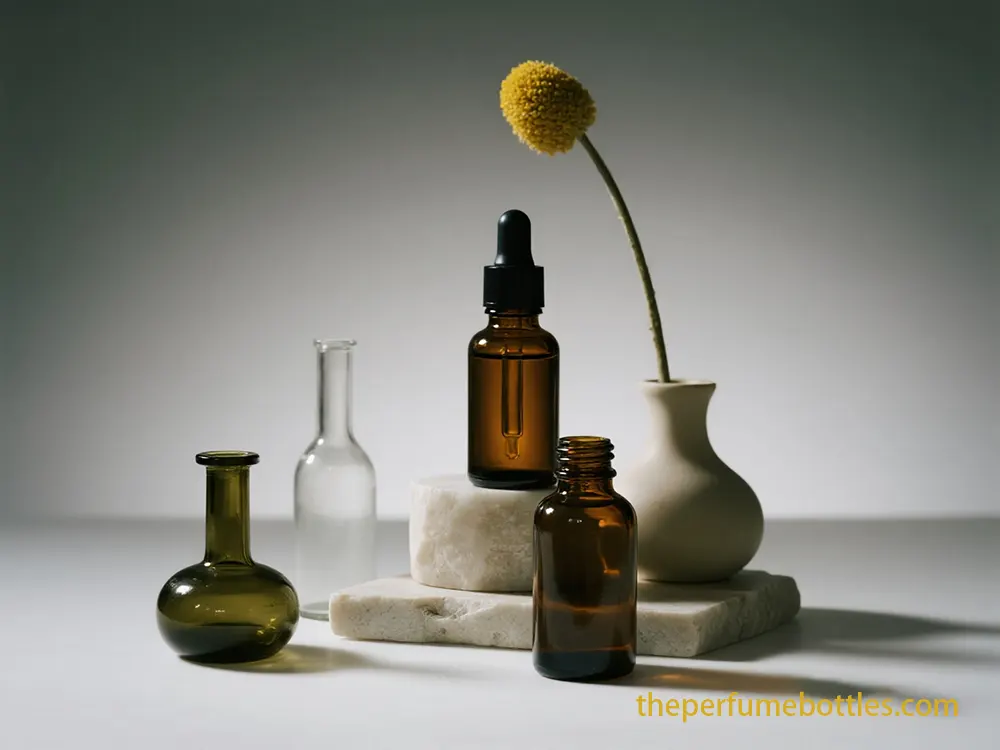
Obtenez des échantillons gratuits
5. Gestion de la chaîne d'approvisionnement et logistique des emballages en verre pour huiles essentielles
L'adaptation de la chaîne d'approvisionnement pour les flacons en verre fragiles d'huiles essentielles est importante pour l'efficacité, la rentabilité et la responsabilité du marché.
5.1. Optimisation de l'approvisionnement
- Sélection des matériaux : Le verre sodocalcique, le verre borosilicaté ou le verre coloré (ambre, bleu cobalt, vert) sont principalement utilisés pour leur inertie chimique et leur protection contre les UV. Le verre violet offre une meilleure protection pour les produits ultra-Permina.
- Structure des coûts et sélection des fournisseurs : Le coût total à l'importation inclut les matières premières (sable siliceux, carbonate de sodium, calcaire, collalets), dont l'instabilité influe sur les prix. Les acheteurs B2B évaluent les fabricants sur la base du contrôle qualité (ISO, BPF), de l'adaptabilité, de la quantité minimale de commande (5 000 à 10 000 unités pour les commandes personnalisées), des délais de livraison et de la fourniture d'échantillons. Des relations durables, notamment dans le cadre de plateformes logistiques comme la Chine, garantissent un suivi constant de la qualité.
- Composants spécifiques et fermés : important pour l'intégrité et la sécurité, notamment les compte-gouttes précis, les réducteurs d'orifice, la falsification et le bouchon de sécurité enfant, y compris les fuites, la contamination, les chutes et l'ingestion accidentelle.
5.2. Gestion des stocks et optimisation de la distribution mondiale
- Emballage protecteur : Une stratégie multicouche réduit les risques de casse : emballage individuel (film à bulles, manchons en mousse), cales de calage, inserts moulés sur mesure (par exemple, en polystyrène expansé, réduisant les pertes à 37 %), fibres moulées à partir de pâte à papier ou séparateurs en carton ondulé. Il est important de combler les vides avec des chips de calage, des coussins d’air ou du papier d’emballage. Il est également important de renforcer le double emballage et les points faibles.
- Entreposage : Le stockage des bouteilles dans un environnement sec, stable et à température/humidité contrôlée permet d'éviter la dilatation et la contraction du verre et de protéger l'emballage. Un empilage stratégique (palettisage, emboîtement) accroît la stabilité. La protection des huiles sensibles à la lumière directe du soleil est indispensable.
- Transport: Pour réduire les vibrations, des changements rapides et des véhicules à température contrôlée sont nécessaires afin d'éviter les suspensions pneumatiques. L'article doit être arrimé à l'aide de sangles, de barres de charge ou de coussins d'air. Un chargement régulier et un étiquetage clair « Fragile » sont essentiels.
5.3. Stratégies d'atténuation des risques pour les chaînes d'approvisionnement mondiales
- Diversification et excès : La diversification des sources d'approvisionnement réduit la dépendance à un seul fournisseur pour les composants essentiels et diminue les risques liés aux conflits géopolitiques, aux catastrophes naturelles ou aux problèmes sociaux. La logistique de transit et de réapprovisionnement permet de réduire les risques et les délais. Les contrats à long terme et les stocks de sécurité sont également importants.
- Surveillance active et planification informelle : L’évaluation continue des risques, le suivi des performances des fournisseurs (stabilité financière, qualité, continuité des activités) et l’élaboration de plans d’action d’urgence sont indispensables. Un système d’intelligence artificielle intégré pour la planification stratégique et l’analyse prospective permet d’anticiper les risques et de réagir rapidement.
5.4. Rôle des plateformes de visibilité de la chaîne d'approvisionnement
- Internet des objets et numérisation : Ces plateformes utilisent des capteurs IoT, des étiquettes RFID et un système de codes-barres pour une transparence totale et en temps réel. Le dispositif IoT surveille la position (température, humidité, chocs, vibrations) de la cargaison et assure un suivi GPS. Ces données permettent de prendre des décisions proactives, d'identifier les obstacles et de procéder immédiatement à une inspection et au traitement des réclamations.
- Blockchain : Recherchez des enregistrements irréversibles, une traçabilité étendue et des transactions fiables, éléments importants pour l'intégrité et la conformité des huiles essentielles.
5.5. Analyse coûts-avantages des méthodes d'expédition (spéculative/prédictive)
Le transport maritime est volumineux mais prend du temps. Le fret aérien assure une distribution rapide, mais à un coût élevé, notamment pour le contrôle de la température et les emballages protecteurs robustes destinés au verre fragile. Cette option permet d'équilibrer les risques liés à la rentabilité, la rapidité de mise sur le marché et les aléas climatiques (pannes, variations environnementales). Le transport aérien peut se justifier pour les produits pétroliers de grande valeur ou à livraison urgente.
5.6. Impact des événements géopolitiques sur les chaînes d'approvisionnement du verre
Les événements géophysiques (guerres commerciales, droits de douane, conflits, restrictions) affectent fortement les chaînes d'approvisionnement du verre, augmentent le coût des matières premières, perturbent la production et obligent les fournisseurs à diversifier leurs sources d'approvisionnement. Les coupures de courant dues aux fortes chaleurs, par exemple, soulignent l'importance d'une visibilité optimale sur la chaîne d'approvisionnement et la nécessité de disposer de fournisseurs alternatifs.
6. Conformité réglementaire et durabilité des emballages en verre pour huiles essentielles
Les entreprises d'emballage apportent une aide précieuse pour s'orienter dans le dédale des réglementations et intégrer des pratiques durables.
6.1. Conformité réglementaire
- Élaboration de la réglementation de la FDA (2024) : mise à jour de la clarté de l'étiquetage (polices standardisées, pas d'allégations médicales sans symboles d'avertissement, nomenclature INCI, approbation de la FDA), étendue aux huiles concentrées pour les emballages à l'épreuve des enfants (par exemple, esbilion, menthe poivrée, huile d'arbre à thé) et sécurité des matériaux pour la sécurité.
- CPSC et emballages à l'épreuve des enfants (PPPA) : La CPSC américaine applique la loi PPPA, qui rend obligatoire l'emballage à l'épreuve des enfants pour les produits domestiques dangereux, notamment certaines huiles essentielles. Des rappels concernent des produits non destinés au transport.
- Étiquetage en vertu de la loi fédérale sur les matières dangereuses (FHSA) : La FHSA impose un étiquetage spécifique aux huiles essentielles dangereuses, qui exige les coordonnées de l'importateur/fabricant, les noms généraux/chimiques, les termes d'avertissement (« danger », « attention »), les mentions de danger/de précaution, les instructions de premiers secours et la mention « tenir hors de portée ».
- Sécurité des matériaux et protection UV : Le verre est privilégié pour son inertie chimique, qui empêche les réactions chimiques et le lessivage. Les verres ambrés et cobalt offrent une protection contre les UV, le verre ambré assurant une meilleure protection contre la dégradation.
6.2. Durabilité des emballages en verre pour huiles essentielles
- Verre recyclé post-consommation (PCR) : Le verre est recyclable en permanence. L'utilisation de verre PCR (très peu) permet d'économiser des matières premières et de réduire la consommation d'énergie (2,5 % pour chaque augmentation de 10 % de la capacité de stockage). Les défis comprennent la disponibilité limitée de verre PCR de qualité alimentaire, la qualité inégale des matériaux et les coûts élevés.
- Innovation légère : L'industrie a réalisé des progrès significatifs, conservant la masse des bouteilles tout en maintenant l'intégration
6.3. Certification et demande des consommateurs en matière de durabilité
- Certification Certification : Une norme d'évaluation rigoureuse et scientifique portant sur la santé des matériaux, la circularité des produits, la protection de l'air et du climat, la pollution de l'eau et des sols, et l'équité sociale. Elle est conforme aux objectifs de l'Union européenne pour tous les emballages d'ici 2030.
- Certification B Corp : La performance sociale et environnementale témoigne de normes élevées en matière de responsabilité et de transparence. Des entreprises comme Sustainable Packaging Industries (SPI) et JBM Packaging ont obtenu la certification B Corp.
- Demande croissante des consommateurs : 90 % des consommateurs sont plus enclins à acheter des produits de marques proposant des emballages permanents ; 54 % d’entre eux achètent consciemment ce type de produits. Environ 10 consommateurs sur 7 devraient privilégier les emballages permanents d’ici 2025, et 43 % seraient prêts à payer un supplément. Une nette préférence (70 %) pour l’étiquette demeure.
- Loi sur la responsabilité élargie du fabricant (REP) : La législation émergente sur la responsabilité élargie des producteurs (REP) renforce les exigences de transparence en matière de matériaux et de conformité de la part des fabricants d'emballages, en imposant des données précises sur les types d'emballages, leur poids et les matériaux recyclés. Les fabricants fournissant une documentation détaillée bénéficient d'un avantage concurrentiel.
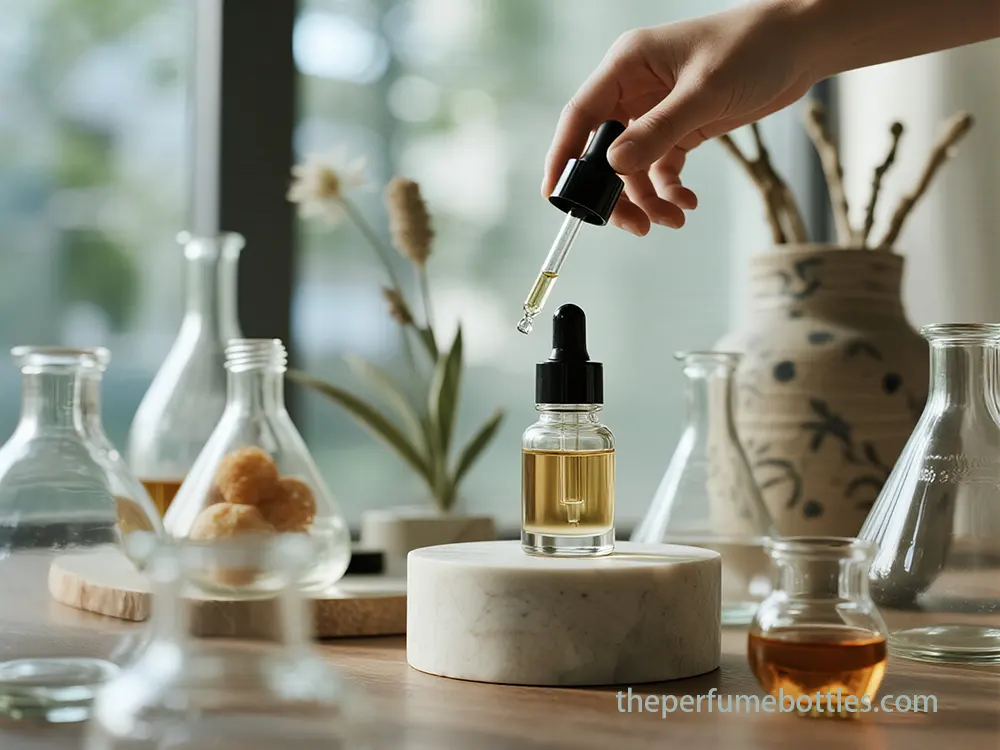
Obtenez des échantillons gratuits
7. Partenariat stratégique : accélérer la mise sur le marché et améliorer l’efficacité des coûts
Les entreprises d'emballage agissent comme conseillers stratégiques, recommandent les tendances du marché, s'adaptent aux coûts et appliquent rapidement et efficacement une production optimisée pour un lancement efficace des produits à base d'huiles essentielles.
7.1. Tendances et analyses du marché
L'industrie des huiles essentielles est un secteur du bien-être très répandu, avec 68,7 % des adultes qui les utilisent régulièrement. Ce marché devrait connaître une croissance importante, portée par la préférence des consommateurs pour une santé naturelle, une vie saine et un bien-être général. Les tendances en matière d'emballage privilégient la personnalisation et la stabilité grâce à des matériaux écologiques et un design minimaliste.
7.2. Les entreprises d'emballage en tant que consultants stratégiques
Les entreprises d'emballage offrent des services à valeur ajoutée qui vont au-delà de la simple fabrication. Elles conseillent sur les tendances du marché, optimisent les structures de coûts et mettent en œuvre une production agile. L'emballage est essentiel pour affirmer l'identité de la marque, communiquer ses valeurs et raconter son histoire. Un emballage particulièrement attrayant constitue un puissant outil de marketing sur les réseaux sociaux, intégrant des éléments interactifs tels que des QR codes ou la réalité augmentée. L'engagement généré fournit des données et des vues précieuses pour optimiser les supports marketing.
7.3. Méthodologies d'optimisation des coûts
- Ingénierie de la valeur (VE) et analyse de la valeur et ingénierie de la valeur (VAVE) : Les approches systématiques, grâce à l'utilisation de matériaux efficaces, à l'adaptation de la conception structurelle, à la reconstruction des matériaux et à l'emballage secondaire, permettent de réduire les coûts des produits (généralement de 5 à 40 %) sans compromettre la qualité ni la fonction.
- Économies de coûts indirects : Faible encombrement, coûts de transport réduits grâce à des matériaux plus légers et temps d'emballage minimal.
- Renforcement de l'emballage : L'encapsulation VE peut améliorer la résistance des emballages afin de réduire les dommages liés au transport, ce qui permet de réduire considérablement les coûts grâce à un faible taux de casse.
- Spécialisation et données : Les ingénieurs en emballage utilisent des données et des modèles propriétaires pour identifier les matériaux idéaux, standardiser les références et rationaliser les opérations, et font état d'économies de 8 à 16 %.
- Révision et optimisation : La refonte des emballages et l'optimisation de leur forme peuvent permettre d'obtenir un contenu adéquat et de réduire les déchets ; une réduction de 8 % du poids de la bouteille peut éliminer environ 1,6 million de tonnes de contenu par an, ce qui pourrait permettre d'économiser plus de 3 milliards de dollars américains.
7.4. Méthodologies de production agiles et rapidité de mise sur le marché
- Production au plus juste : La rationalisation de la chaîne d'approvisionnement permet d'éliminer le gaspillage, de créer un flux constant et responsable, et de produire au moindre coût. Il en a résulté un lancement réussi, une amélioration de la qualité et une quasi-élimination des problèmes.
- Échange à une minute (smed) : Un fonctionnement allégé d'un fonctionnement allégé, des activités externes et rationalisées, séparant, séparant, un fonctionnement allégé pour réduire les activités individuelles.
- Avantages liés à la mise en œuvre : L'application de la méthode SME et l'intégration des systèmes MES/CMM permettent de réduire le temps moyen de changement de 20 à 30 % en trois mois et de 40 à 50 % en 6 à 12 mois. Des études de cas démontrent une diminution significative des temps d'intervention, une augmentation de l'efficacité globale des équipements et une réduction des coûts de main-d'œuvre.
7.5. Retour sur investissement des partenariats stratégiques en matière d'emballage
Le service de partenariat stratégique Prasad favorise la diversification, l'accès à de nouveaux marchés, l'adaptation des ressources et l'accroissement de la créativité et de l'innovation. Le calcul du retour sur investissement (ROI) est essentiel à la rentabilité et à la prise de décisions éclairées, en tenant compte des coûts directs et indirects. Des évaluations régulières et des objectifs moyens permettent de suivre le ROI et d'assurer son alignement avec les objectifs stratégiques. Des partenariats solides en matière de fabrication contribuent à l'amélioration de la qualité des produits grâce à la transparence de la chaîne d'approvisionnement, la réduction des interruptions, des délais de livraison plus courts, des valeurs partagées et un système d'assurance qualité rigoureux.
7.6. Rôle de l'analyse des données dans la prévision de la demande du marché
L'analyse des données pour la prévision de la demande permet de prendre des décisions éclairées en matière de production, de stocks et de ventes grâce aux données historiques, aux algorithmes d'IA, aux modèles statistiques et aux informations en temps réel (points de vente, transactions en ligne). Elle permet également de réduire les excédents. Pour les entreprises d'emballage, la combinaison de méthodes quantitatives (par exemple, les séries chronologiques) et qualitatives (avis d'experts) est essentielle pour des prévisions précises.
8. Innovations émergentes dans le conditionnement en verre des huiles essentielles
L'avenir du design et de la fonctionnalité des flacons d'huiles essentielles est façonné par les tendances futures et les progrès technologiques.
8.1. Traitements de surface avancés pour une protection et une fonctionnalité accrues
- Protection UV personnalisée : Le verre ambré bloque 98 % des rayons UVB. Des techniques avancées, telles que le dépôt de couches atomiques (ALD), sont utilisées pour ajuster précisément la longueur d'onde bloquée par les UV sans compromettre la transparence, offrant ainsi une protection sophistiquée contre la photodégradation.
- Revêtements antimicrobiens à base d'huiles essentielles : Les huiles essentielles possèdent des propriétés antimicrobiennes intrinsèques. Clear Research (août 2024) a mis au point une nouvelle surface antibactérienne, composée de micro-nanosphères contenant de l'huile essentielle d'eucalyptus, qui a permis de réduire la contamination de 99,98 %, ce qui laisse entrevoir un potentiel pour la prévention de la formation de biofilms.
- Revêtements oliophobes et hydrophobes : Ces revêtements forment des surfaces résistantes à l'huile, anti-traces de doigts et riches en eau, largement utilisées dans l'électronique grand public.
- Traitement par échange d'ions plasma (P-IET) : Un procédé synergique P-IET de type I sur verre borosilicaté crée des surfaces hydrophiles durables, ce qui est important pour une distribution efficace et sans gaspillage de médicaments à base d'eau, qui peut être adaptée à des doses précises et exactes.
8.2. Intégrations d'emballages intelligents pour une meilleure interaction avec les consommateurs et une sécurité accrue de la chaîne d'approvisionnement
Pour garantir l'authenticité et la traçabilité, la technologie NFC/RFID (communication sur le terrain et identification par radiofréquence) est utilisée dans les secteurs à haute valeur ajoutée pour l'authentification des produits et la traçabilité de la chaîne d'approvisionnement. Elle repose sur des algorithmes de comptage et de cryptographie dynamique.
- Capacité d'expérience client : L'emballage intelligent (code QR, étiquette NFC, RA) fournit des informations détaillées sur le produit, des instructions d'utilisation et des rappels de dosage, une interaction client approfondie et permet d'améliorer l'expérience de déballage.
- Implications éthiques : Les données issues de l'analyse des emballages intelligents par l'IA soulèvent d'importantes questions éthiques relatives à la protection de la vie privée, à la sécurité, à l'équité et à la responsabilité. La collecte, l'utilisation et le stockage des informations sensibles sont des enjeux primordiaux.
8.3. Nouvelles formulations de verre durable et considérations environnementales
- Verre biodégradable : En mars 2023, une nouvelle famille de verres écologiques, à base d'acides aminés et de peptides, a été mise au point. Ce verre biosourcé, recyclé et biodégradable, pallie le problème de la non-biodégradabilité du verre traditionnel. Cependant, sa commercialisation à grande échelle est encore loin d'être acquise.
- Verre ultra-léger : En plus de 50 ans, les emballages en verre sont 30 % plus légers et leur production consomme 70 % d'énergie en moins.
- Le verre comme solution permanente : Le verre est 100 % recyclable et peut l'être indéfiniment sans perte de qualité. Son recyclage réduit la consommation d'énergie et les émissions de CO2. Les entreprises privilégient les emballages en verre pour leurs qualités écologiques reconnues.
- Système de fermeture et de remplissage écologique : L'innovation comprend des bouchons biodégradables, des couvercles en bambou et des compte-gouttes en PP recyclable. Les solutions réutilisables et réutilisables pour réduire les emballages à usage unique gagnent du terrain.
Vesseluxe est à l'avant-garde de ces innovations, offrant des solutions sur mesure qui combinent des techniques de pointe et des pratiques durables pour distribuer des emballages qui non seulement protègent et préservent les huiles essentielles, mais renforcent également la présence de la marque et trouvent un écho auprès d'un consommateur averti.
Commentaires
Catégories de produits
Bouteilles en promotion
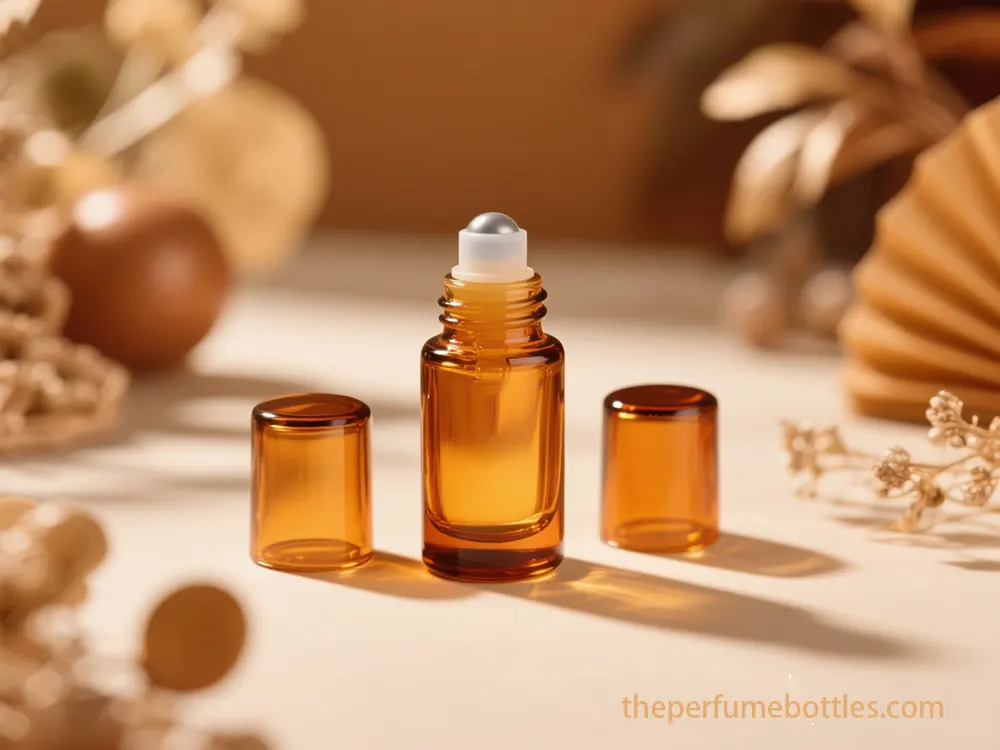
Étude de cas : Flacons roll-on personnalisés en verre ambré de 10 ml pour une marque française d’huiles essentielles
Flacons roll-on personnalisés en verre ambré de 10 ml pour huiles essentielles françaises — conception précise du col, contrôle qualité rigoureux et livraison rapide pour une étanchéité parfaite.
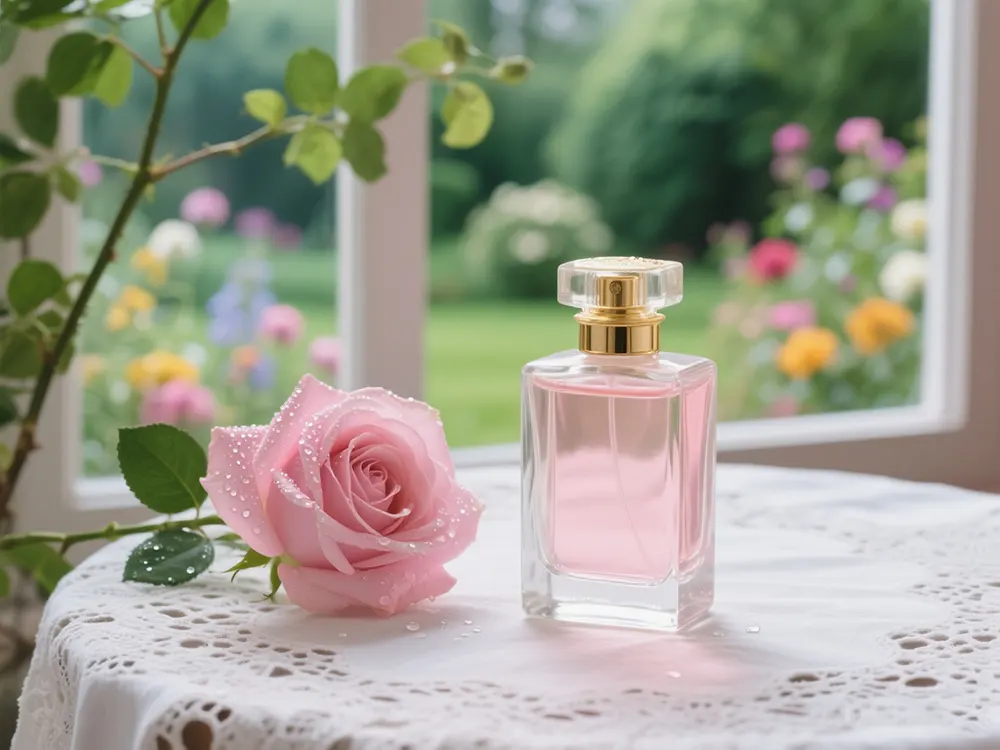
Combien de temps un parfum peut-il se conserver dans son flacon ? Facteurs influençant sa durée de conservation
Découvrez combien de temps un parfum peut se conserver dans son flacon. Apprenez comment la chimie, le stockage et l'emballage affectent l'intégrité d'une fragrance et comment prolonger sa durée de vie au maximum.
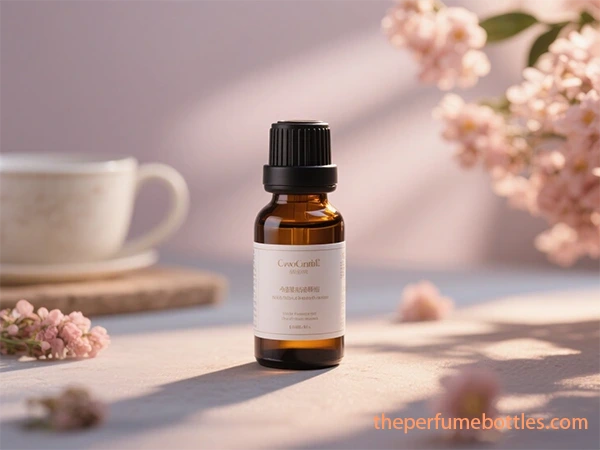
Why High-Quality Essential Oil Bottles Are Key to Winning Clients
Boostez votre activité grâce à des flacons d'huiles essentielles de haute qualité. Découvrez comment un emballage haut de gamme vous aide à attirer des clients et à instaurer une confiance durable envers votre marque.

Positionnement de luxe avec des flacons en verre pour huiles essentielles pour les marques d'aromathérapie
Sublimez vos marques d'aromathérapie avec des flacons en verre pour huiles essentielles. Découvrez un design luxueux et durable.

Comment remplir un flacon de parfum ?
Découvrez les meilleurs fabricants de flacons de parfum pour les commandes en gros. Explorez des designs personnalisés, des matériaux durables et des solutions de vente en gros pour les marques internationales.
- +86 186 5178 1159
- [email protected]
- Mon-Sun 07:00-21:00
Étiquettes
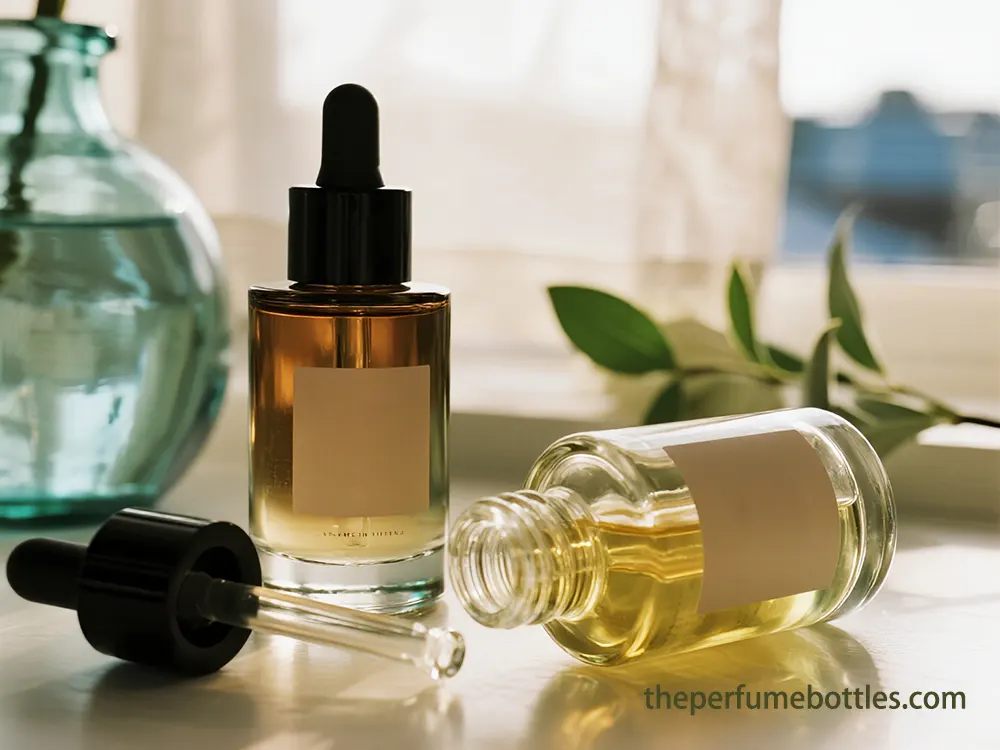
Choisir le bon fournisseur de flacons compte-gouttes en verre : pourquoi le prix compte plus que tout.
Apprenez à choisir le bon fournisseur de flacons compte-gouttes en verre en privilégiant la qualité, la conformité, la stabilité de l'approvisionnement et la durabilité plutôt que le simple coût.

Étude de cas : Comment une marque de parfums portugaise indépendante a choisi Mosteb comme fournisseur de flacons de parfum en verre
Une marque de parfums s'est associée à nous en tant que fournisseur de flacons de parfum en verre, résolvant les problèmes de givrage et d'ajustement des bouchons grâce à une ingénierie précise et une production personnalisée stable.
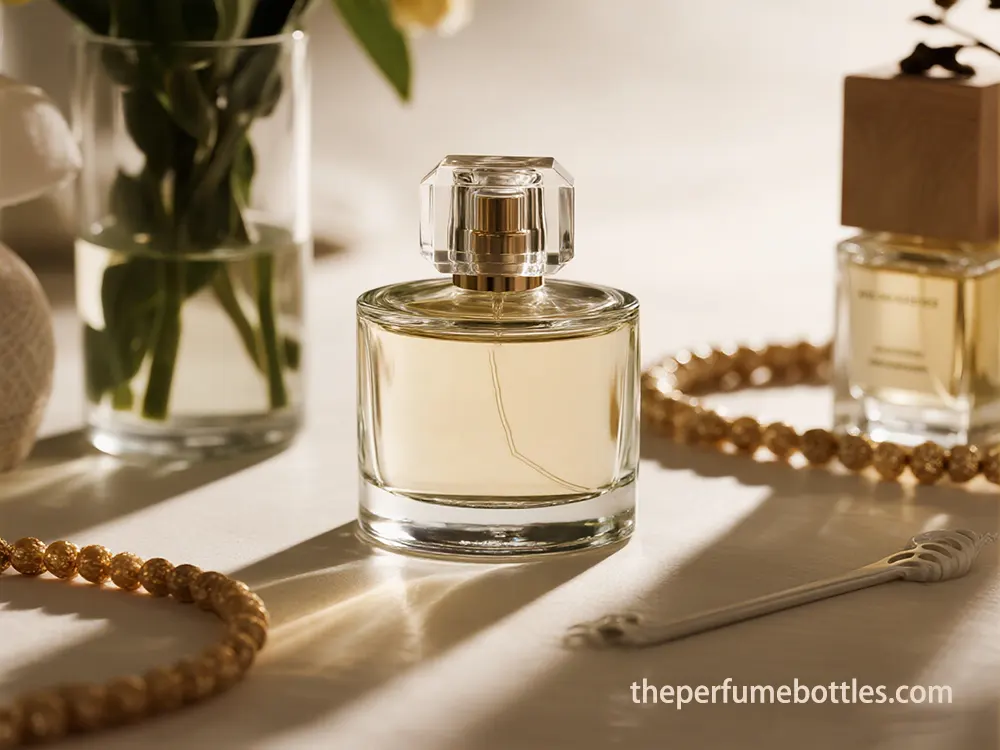
Cadre stratégique pour la sélection d'un fournisseur de flacons de parfum en verre
Trouvez votre fournisseur stratégique de flacons de parfum en verre grâce à ce guide, qui vous montre comment le bon partenaire peut accélérer et pérenniser la croissance des marques de parfums.

Étude de cas : Notre usine de flacons roll-on en verre a livré des emballages pour une marque d'huiles essentielles
Une étude de cas sur la manière dont une usine de bouteilles à roulettes en verre a résolu les problèmes de stabilité de roulement et de durabilité des cols fins pour fournir des bouteilles haut de gamme fiables et sans fuite.

